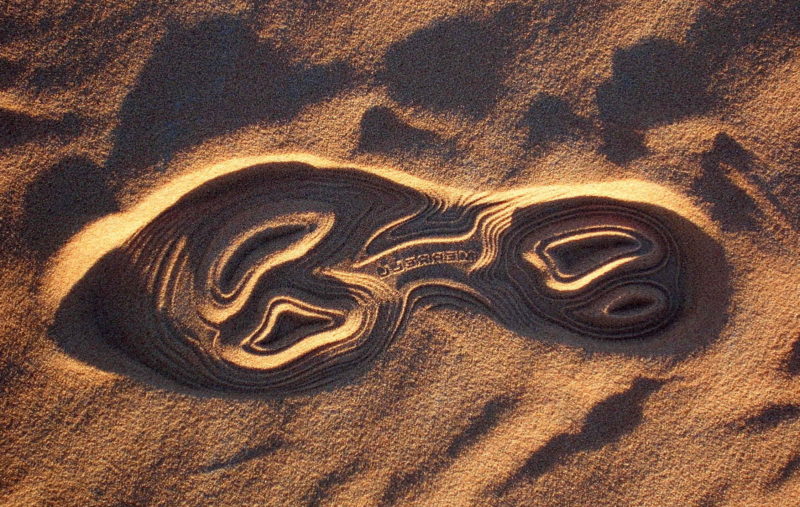Joy Masoff, author Oh, Ick!: 114 Science Experiments Guaranteed to Gross You Out (with Jessica Garrett and Ben Ligon), provides an exclusive Ick-tivity you wont find in the book.
People have been studying the footprints of criminals ever since one caveman snuck into his neighbor’s cave and stole his hunk of mammoth meat, leaving a guilty track in the dirt. However, it’s hard to study footprints because you can’t pick them up and they easily get destroyed by roaming saber-toothed tigers. Here’s a modern way for you to be a detective at a crime scene. Ask someone to volunteer to create a footprint with a shoe, but don’t watch which shoe they use. You can then do the experiment below to create a plaster-of-Paris cast of a footprint. Once you have your cast, you can compare it to the suspects’ shoes and ID the guilty sneaker.

Go Fetch:
- cardboard box or plastic container big enough to step in with about 1 to 2 inches of sand or dirt
- plaster of Paris
- toothbrush
- several different shoes, boots or sneakers
- bucket
- water
- stirring stick
Do This:
- Sprinkle some water on the sand or dirt so that it will hold an imprint better..
- When you are not looking, have a friend or family member push a shoe into the sand/dirt to create a footprint. Tell them to push really hard to it makes a good imprint (twisting the shoe back and forth and adjusting the amount of water added to the mix can help).
- Ask your helper to carefully remove the shoe, clean up the bottom of it, and place it amongst the other innocent shoes. Be sure no one shakes the box and destroys the evidence!
- Make the plaster of Paris by following its directions.
- Carefully pour the plaster of Paris into the footprint.
- Wait until the plaster has set. This is typically 24 hours for the best results, so be patient, detective. You have successfully created a cast of the shoe! Now it’s time play detective…
- Remove the cast from the box. Turn it upside down and use a toothbrush to remove the sand/dirt. If you wait longer, you can gently rinse the cast with water to make it even cleaner.
- Gather all the suspect shoes and compare their treads to the cast. Odds are that you can positively identify the shoe that made the footprint. If you look carefully, you can probably discover some unique features of that shoe that would make it stand out from other identical types of shoes. For example, can you find a nick in a tread or an extra indentation caused by a pebble that is lodged into the shoe? Detectives look for these distinguishing features when analyzing footprints.
What Just Happened?
Plaster of Paris is made of the relatively soft mineral gypsum, which contains water. The gypsum is ground up and heated to remove the water, leaving behind a powder of calcium (the same element in your bones) and sulfur (found in detergents and fertilizers). This dehydrated mixture was originally called plaster of Paris because large amounts of the mineral were found in Paris, although it is actually found all over the world and was used by ancient people. When water is reunited with the powder, it hardens into plaster after it dries. A great feature of plaster of Paris is that it doesn’t shrink when it dries. Because the dried plaster stays the same size, it is very useful for creating life-sized models of things, and it’s admissible as evidence in court.
For more Ick-tivities, check out the book!





No Comments